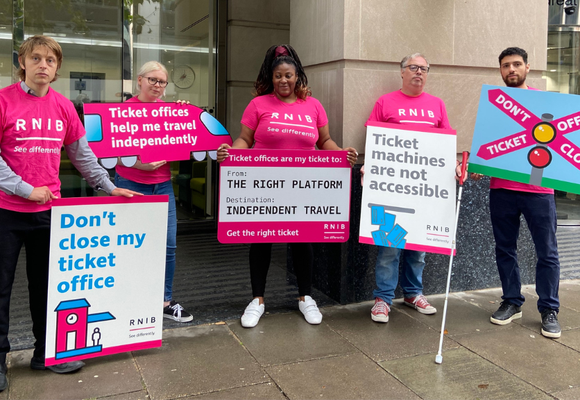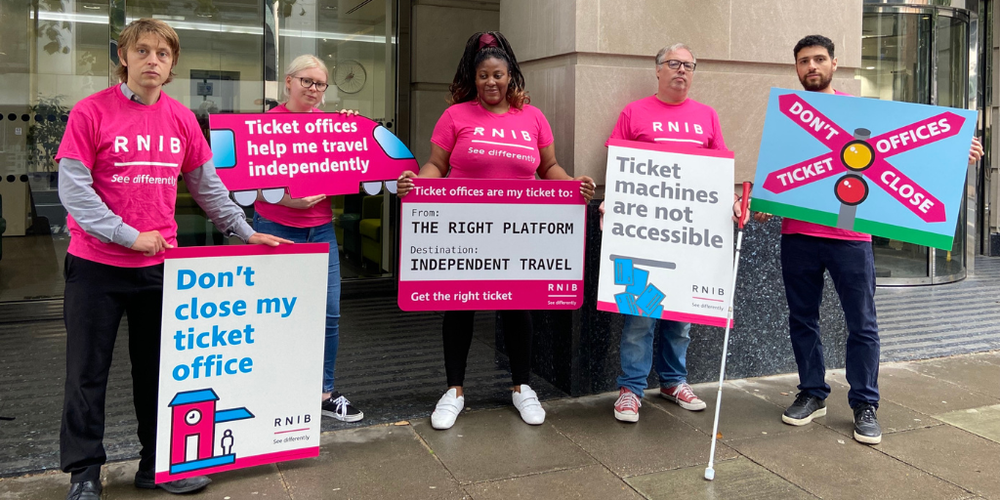Filters
Showing results
2025 review: Our campaign highlights
This year, we’ve made real progress in championing the rights of blind and partially sighted people. From transport and health to voting and social care, we’ve responded to government proposals and set out our own vision for an accessible, inclusive future.
From fixing iPads to meeting Royalty - RNIB volunteers take trip to Windsor for State visit
Two volunteers with sight loss visited Windsor earlier this month (Thursday, 4 December) to meet a Royal request and to explain how volunteering can bring communities together.
The Volunteers Behind Digital Independence
Hilary taps her tablet carefully. Across the table, volunteer Richard leans over patiently, guiding her through the settings that let her use her device by voice - from dictating messages to exploring the AI features. In this small, welcoming space of the RNIB Tech Hub in Edinburgh, the world narrows to just the two of them, a tablet screen, and the slow unfolding of confidence and independence.
Boost for Aberdeenshire Sight Loss Services
People in Aberdeenshire facing sight loss will continue to benefit from dedicated, one-to-one support as a new Eye Care Liaison Officer (ECLO) joins the local service.
Raising awareness of sight loss with LADBible
When we found out that only 2 in 5 people in the UK feel they have a good understanding of the lives of blind and partially sighted people – we knew we had to do something about it.
Creating a true democracy – making voting accessible
For over 150 years, the right to vote independently and in secret has been a cornerstone of democracy. Yet, for many blind and partially sighted people, this right remains elusive. In 2024, we launched a dynamic, multi-faceted campaign using the local and general elections to highlight the need for widespread systemic change.
RNIB Cymru’s response to Senedd Inquiry into Ophthalmology Services in Wales
In response to the Senedd Health and Social Care Committee’s recent report into ophthalmology services in Wales, RNIB Cymru Country Director, Ansley Workman, has issued the following statement:
Autumn Budget 2025: What it means for blind and partially sighted people
The Chancellor Rachel Reeves has announced the 2025 Autumn Budget, setting out UK Government plans for spending, taxation, and public services. We’ve been analysing what the announced changes mean for blind and partially sighted people across the UK.
RNIB says official response to Covid pandemic put blind and partially sighted people at risk
The Royal National Institute of Blind People (RNIB) has responded to the second report from the official UK Covid Inquiry saying blind and partially sighted people were put at serious risk by the official government response.
Motorists provide vital support for blind and partially sighted people through petrol pump donations
Thousands of motorists across the UK have raised vital funds to help blind and partially sighted people live their best lives by making donations when they fill up at petrol pumps.







